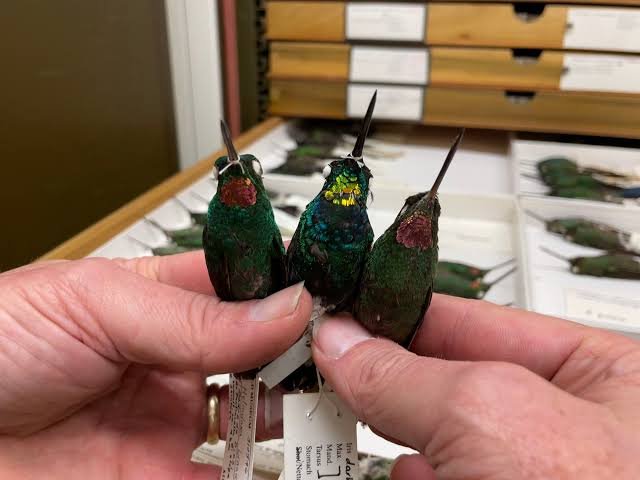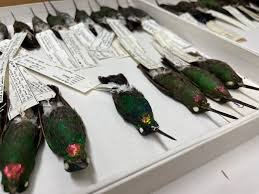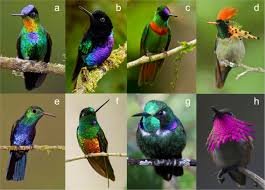
New Infection in Hummingbirds Discovered: A Threat to USA’s Ecosystem
Introduction
In recent months, scientists have discovered a new infection affecting hummingbirds, posing a significant threat to the USA’s ecosystem and various interconnected species. This article explores the discovery, implications, scientific investigations, and potential measures to mitigate its effects.
The Discovery of the Infection
Initial Observations
Early in 2023, birdwatchers and biologists across several states reported unusual behaviors and physical symptoms in hummingbirds, such as lethargy, disorientation, and visible lesions. The frequency of these reports increased, prompting a thorough investigation.
Scientific Investigation
A team of ornithologists and microbiologists from leading research institutions, including Cornell University and the Smithsonian Migratory Bird Center, undertook a study to identify the cause of these symptoms. They captured and examined affected birds and conducted extensive laboratory analyses, leading to the identification of a novel pathogen.
Characteristics of the Infection
The Pathogen
The newly discovered pathogen, tentatively named Hummingbird Adenovirus 1 (HAdV-1), is a type of adenovirus that primarily targets the respiratory and gastrointestinal systems of hummingbirds. Adenoviruses are known to cause a range of illnesses in various species, including humans, but HAdV-1 appears to be specifically adapted to hummingbirds.
Symptoms and Transmission
Infected hummingbirds exhibit a variety of symptoms, including difficulty breathing, reduced feeding activity, weight loss, and the development of lesions around the beak and eyes. The virus is highly contagious, spreading through direct contact between birds, contaminated feeding stations, and potentially through airborne particles.
Impact on Hummingbird Populations
Decline in Numbers
The infection has led to a noticeable decline in hummingbird populations in affected areas. Species such as the Ruby-throated Hummingbird (Archilochus colubris) and the Anna’s Hummingbird (Calypte anna), which are common in North America, have shown significant population decreases. This decline is concerning not only for bird enthusiasts but also for the broader ecological impact.
Disruption of Ecosystem Services
Hummingbirds play a crucial role in pollination, especially for plants that rely on their long beaks and hovering flight to access nectar. A decline in hummingbird populations can lead to reduced pollination rates, impacting plant reproduction and the animals that depend on those plants. This disruption can have cascading effects throughout the ecosystem.
Broader Ecological Implications
Effects on Other Species
The decline in hummingbird populations can indirectly affect other species. For example, some insects and birds that compete with hummingbirds for nectar might experience population changes. Additionally, plants that rely on hummingbirds for pollination might produce fewer seeds, affecting herbivores and seed dispersers.
Human Impact
Hummingbirds are also important to human culture and economy. Birdwatching is a popular recreational activity, and hummingbirds are a major attraction. Declines in their populations can affect local tourism and related businesses. Moreover, the role of hummingbirds in pollination supports the health of gardens and natural spaces, which are valued by communities for their aesthetic and ecological benefits.
Response from the Scientific Community.
Research Initiatives
In response to the discovery, several research initiatives have been launched to study HAdV-1 in greater detail. Scientists are investigating the virus’s genetic makeup, transmission pathways, and the factors contributing to its spread. These studies are crucial for developing effective strategies to manage and mitigate the infection.
Conservation Efforts
Conservationists are working to protect hummingbird populations through various measures. These include setting up sanitized feeding stations, promoting safe feeding practices among the public, and creating habitats that support hummingbird health. Public education campaigns are also underway to inform people about the infection and how they can help prevent its spread.
Mitigation Strategies
Enhancing Monitoring and Surveillance
One of the key strategies in managing the infection is enhancing monitoring and surveillance efforts. By closely tracking hummingbird populations and the prevalence of HAdV-1, scientists can identify hotspots and take targeted action. This involves collaboration between researchers, wildlife agencies, and citizen scientists.
Improving Hygiene at Feeding Stations
Since contaminated feeding stations are a significant transmission route, improving hygiene practices is essential. Recommendations include regularly cleaning feeders with a bleach solution, providing fresh nectar daily, and avoiding overcrowding of feeders. Public awareness campaigns are crucial to ensure widespread adoption of these practices.
Habitat Restoration
Restoring and preserving natural habitats can help support hummingbird health and resilience. Efforts include planting native flowering plants that provide natural nectar sources, creating safe nesting sites, and protecting areas from habitat destruction. Healthy habitats can reduce stress on hummingbird populations and make them less susceptible to infections.
The Role of Technology
Advanced Diagnostic Tools
The use of advanced diagnostic tools is aiding in the rapid identification and study of HAdV-1. Techniques such as PCR (polymerase chain reaction) and genomic sequencing allow scientists to detect the virus in samples quickly and accurately. These tools are essential for monitoring the spread and understanding the virus’s evolution.
Citizen Science Contributions
Citizen science projects are playing a significant role in tracking the infection. Apps and online platforms allow birdwatchers to report sightings of hummingbirds, note any symptoms, and provide data on local populations. This crowdsourced data is invaluable for researchers and helps create a comprehensive picture of the infection’s impact.
Long-Term Outlook
Potential for Vaccine Development
One of the long-term goals of the scientific community is the development of a vaccine for HAdV-1. While this is a complex and time-consuming process, advances in virology and immunology provide hope. A successful vaccine could protect hummingbird populations and help restore their numbers.
Ensuring Ecosystem Resilience
Building resilience in ecosystems is crucial for coping with future threats. This involves promoting biodiversity, protecting critical habitats, and fostering healthy interactions between species. Resilient ecosystems are better equipped to withstand and recover from disruptions like disease outbreaks.
Conclusion
The discovery of HAdV-1 in hummingbirds is a significant concern for the USA’s ecosystems. The decline in hummingbird populations has far-reaching implications, affecting not only the birds themselves but also the plants and animals that depend on them. The scientific community is actively researching the virus and developing strategies to mitigate its impact. Public awareness and participation are vital in these efforts, highlighting the interconnectedness of all species and the importance of maintaining healthy ecosystems.
By understanding the nature of the infection, its effects, and the measures needed to combat it, we can work towards preserving the delicate balance of our natural world and ensuring the survival of these remarkable birds.




